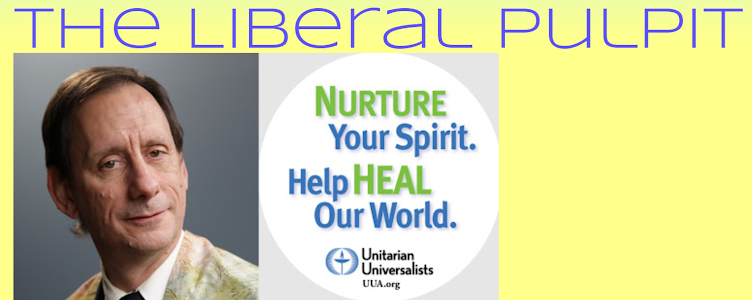Rev. Meredith Garmon, Acceptance and Resistance, part 3
While Christianity may often seem to be predominantly concerned with private, individual salvation, there have been, within Christianity, counter movements to the privatistic version. The Social Gospel movement of the 19th century, and liberation theology in the 20th have aimed to reclaim Jesus' social revolution. Those are positive developments.
The temptations of private salvation can also afflict Budddhists. Withdraw from the world, do intensive meditation, attain enlightenment, nirvana, satori. The rest of the world doesn't matter. Take refuge in the Buddha, dharma, and sangha, and have a turtle life.
Indeed,
"The view of Buddhism as a mystical religion far removed from the realities of the workaday world has been a major part of the faith's appeal in the West." (Brazier)To be sure, the message also spoke of Buddhist compassion to one another. Buddhist compassion, however, like Christian love, has too often been taken to mean being nice to people with whom we are in face-to-face contact rather than the faceless people far away who sew our shirts, or work the fields of our sugar and coffee. There is, within Buddhism, a counter movement to the privatistic version. Liberation Buddhism aims to reclaim Buddha's social revolution. This is a positive development.
And it has always been a part of Buddha’s teaching. Social transformation is an intrinsic dimension of Buddha’s – no less than Jesus’ -- original goal.
Socially engaged Buddhism looks a great deal like Unitarian Universalism. Engagement on behalf of justice, equity, and compassion. World community with peace, liberty, and justice for all. Buddhists in the west and east alike have in recent decades been recovering social engagement:
"action in society rather than reliance upon meditation and devotion alone;But how exactly do we get from a blissful acceptance of things exactly as they are to this kind of activism on behalf of changing things? How do those things which seem to pull in opposite directions turn around and become the same direction? For the beginning of an answer to that, let me turn to Ruben.
-nonviolence and ecological awareness rather than monasticism;
-interreligious dialogue and a willingness to find allies among followers of other faiths;
-a search for a new economics at least to abate the destructive effects of wealth disparity and environmental degradation;
-a gender inclusivity;
-a concern with institutional as well as personal reform." (Brazier)
Ruben Habito was my Zen teacher for 10 years, up until a couple years ago. Ruben is a slight Filipino man now almost 70 years old. As a young man, he became a Jesuit priest, got stationed in Japan, and found himself practicing Zen at a monastery there for 16 years before coming to the states and taking a faculty position at SMU’s Perkins Theological School. In one of his books, Healing Breath: Zen Spirituality for a Wounded Earth, Ruben wrote:
“To see the natural world as one’s own body radically changes our attitude to everything in it. The pain of Earth at the violence being wrought upon it ceases to be something out there, but comes to be our very own pain, crying out for redress and healing. In Zen sitting, breathing in and breathing out, we are disposed to listen to the sounds of Earth from the depths of our being. The lament of the forests turning into barren desert, the plaint of the oceans continually being violated with toxic matter that poisons the life nurtured therein, the cry of the dolphins and the fish, come to be our very own plain, our own cry, from the depths of our very being.”With deep acceptance of our world and of our selves comes a seeing through of the artificial boundary between what is me and what is other.
Cultivating a love for what is turns out to also cultivate awareness that what is -- is me. “Mountains and rivers and the great wide earth, the sun and the moon and the stars” – they are all me. The earth’s forests, deserts, oceans are my own body. When I stop believing those thoughts that judge everything in light of my own separated, isolated interests, then I start recognizing that I’m not separated or isolated. Loving the world and loving myself become the same thing.
And when that happens, I naturally reach out to soothe suffering. Resistance to social injustice, to the despoiling of our planet, doesn’t so much feel like resistance anymore. It feels like simply being carried in the flow of love for what is.
To put it in one word, the force which turns acceptance and resistance around so that they pull in the same direction rather than in opposite directions is this: compassion.
Of course, there is a great deal of resistance in this world that isn’t grounded in compassion. That’s the kind of resistance to practice letting go of – that’s where last month’s theme comes in: letting go. Resistance grounded in compassion rather than in the illusion of a separate self: that’s the kind of resistance that is also known as love and that, in public, goes by the name justice.
Social activism fueled predominantly by anger, by resentment, by condemnation of the evil other will burn out, will be counterproductive, will fail us. Social activism fueled predominantly by acceptance, by compassion, by loving all that is and therefore naturally moving to care for all that is – social activism that, while attentive to effective strategy, is not attached to results – that is what will save us.
* * *
This is part 3 of 3 of "Acceptance and Resistance"
See also
Part 1: Creating the Better, Accepting the Real
Part 2: Pain Is Inevitable, Suffering Is Optional



This is helpful in this time of anger and fear - how can we channel all that to not only be more effective, but also more resilient and compassionate. Awesome work!
ReplyDelete